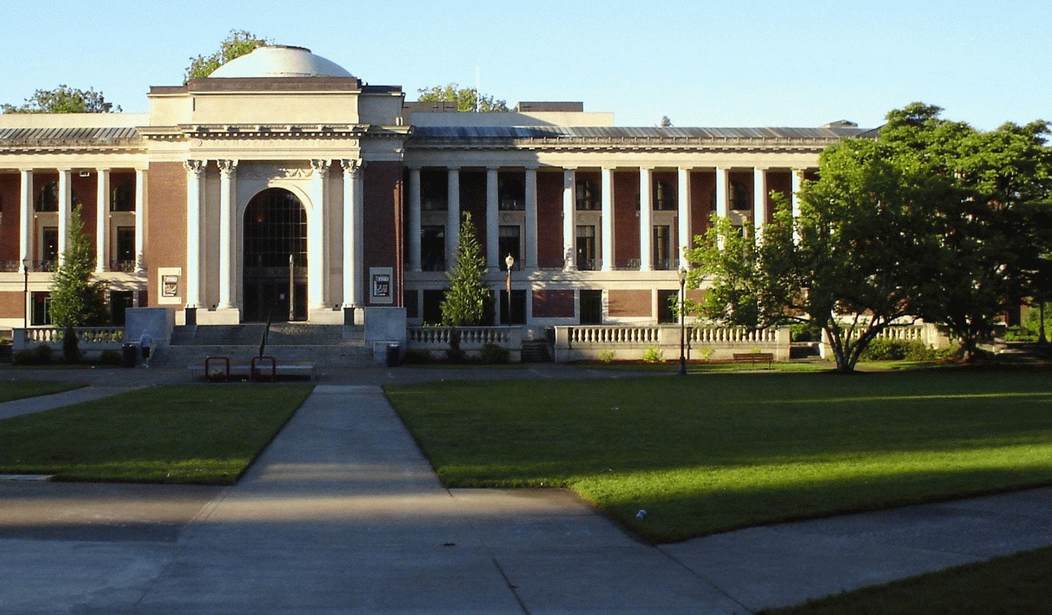This month, to relatively little outrage or public notice, Oregon State University is holding segregated “diversity” sessions for students, staff, and faculty. At “retreats,” students and faculty will learn about identity and micro-agressions (for example: expressing a belief in merit, wearing an offensive Halloween costume, or having someone feel like she does not belong).
The Daily Caller reports that a total of four workshops will be held: one for non-white students, another for white students (to educate them about their “white privilege”), one for multi-racial students, and one for white faculty and staff called “Examining White Identity.”
The testimonials at the university’s website indicate that the sessions are sure to foster more “cry-bullies,” as we saw on campuses across the country in 2015. And it seems that among Oregon State’s 30,000 students, none raised significant objections to funding being spent on segregated sessions.
This same outrage almost happened in 2013 at Hamilton College, too. But that proposed segregated “dialogue” never went forward, thanks to students affiliated with the Alexander Hamilton Institute for the Study of Western Civilization (AHI).
In 2013, from the lavishly funded on-campus Days-Massolo Center (ironically founded “to embrace the importance of supporting a diverse and inclusive community”), an email was sent inviting students to participate in a “dialogue about internalized racism.” The “dialogue,” however, was for “people of color” only. Another dialogue for white students and faculty was promised for the following semester, and the program would have culminated in a non-segregated session.
AHI students, led by senior Dean Ball, got the administration to back down.
Ball described what happened in a blog post at Legal Insurrection, a site run by Cornell law professor William A. Jacobson, a Hamilton College alum who has been dismayed by what’s been going on at the small elite liberal arts college.
Ball described speaking to Amit Taneja — Hamilton College’s “Director of Diversity & Inclusion” — and expressing dismay at this new form of segregation. Taneja, without any evidence, told Ball that his views were in the “minority” of the student body.
Ball pointed out that Taneja’s job description was to protect minorities.
Ball was a leader of the 150-member student body at the Alexander Hamilton Institute for the Study of Western Civilization, an independent non-profit education corporation founded by three Hamilton College faculty members: history professors Robert Paquette and Douglas Ambrose, and economics professor James Bradfield. The three were concerned about the decline of academic standards and loss of freedom. As Paquette puts it, AHI upholds the “ethos of a liberal arts education,” countering the all-too common liberal arts college’s “political agenda that masks a totalitarian impulse in a utopian illusion.”
The AHI offers students educational opportunities they rarely get in college: exposure to Augustine, Plato, and Leo Strauss through reading groups; lectures on and off campus by distinguished scholars and writers; the opportunity to write for a student newspaper, Enquiry, that respects their opinions; and internships, directed readings, and social gatherings at the AHI building on the village square, about 1.5 miles from the campus on the hill.
The center was originally to be on campus, but found itself the target of a faculty-led hostile takeover attempt. The story is related in the New Criterion; I now live in the building as one of two resident fellows.
The AHI students contacted the media, prepared a petition for Hamilton’s board of trustees, and wrote an op-ed for the student newspaper. They also sent out a campus-wide email with the heading “RACIAL SEGREGATION AT HAMILTON.” The email stated:
“The Alexander Hamilton Institute believes that no safe zone is worth the price of segregation. All are welcome to join us for a conversation on race.”
That was enough to get Taneja to open the “dialogue” to all races. That victory, however, marked the beginning of the harassment of Ball and other AHI students.
That very night, Ball was threatened with violence and accused of white supremacy, almost entirely by students he had never met. His Twitter and Facebook feeds were filled with “both fury and support over what the AHI had done.”
The following Monday, September 23, his character was attacked at the Student Assembly meeting, which, according to the SA president, drew more students than he’d ever seen. The next morning Ball found the campus littered with “hundreds of pieces of paper posted on trees, windows, doors, and everywhere else imaginable” with sayings about social justice from luminaries like Tupac Shakur.
Ball concluded:
“Hamilton’s campus was no ‘safe zone’ for me or anyone sympathetic to what the Alexander Hamilton Institute did.”
Now manager of state and local policy at the Manhattan Institute, Ball recalls those days. Although it was a student-led initiative, “[w]e always knew we had the full-throated support of [Executive Director] Professor Paquette and everyone else at AHI.” The agreement was implicit: “Professor Paquette and I had been through enough of these incidents at this point that this dynamic between us was understood.”
Paquette had challenged Taneja from the time of the self-identified social-justice activist’s hiring. Paquette recalls sending the trustees a lengthy letter in 2011 that used Taneja’s own words to describe who he was and to inform of what he intended to do as director of the “so-called cultural education (indoctrination) center.” Although the trustees and administration did not heed Paquette’s words in 2011, in 2013 AHI students forced Taneja’s hand.
To be sure, places like AHI can’t cure political correctness on our campuses. But when 19 year olds are surrounded by guest speakers like performance artist Rhodessa Jones, are ridiculed by their professors in class, and are punished for failing to complete assignments to their political specifications, it just takes a professor or two and a handful of peers to give them the confidence to face down the mobs of angry students and hostile administrators. Per Dean Ball:
“The AHI connected me to all of the like-minded students on campus and the AHI gave me the intellectual firepower I needed in the first place to effectively counter the administration’s tactics.”
In 20 years of teaching college English, I’ve rarely seen such poised, polite, well-rounded, and confident young people. They are polished writers and public speakers. I also recognize the students giving testimonials for the Oregon workshops, ending statements on question marks and repeating slogans like zombies. Sadly, they are far more common and their numbers have increased in recent years.
It looks like there is a need for something like the AHI in Oregon. Surely, there must be enough students there to confront this new form of Jim Crow: campus brainwashing sessions.









Join the conversation as a VIP Member